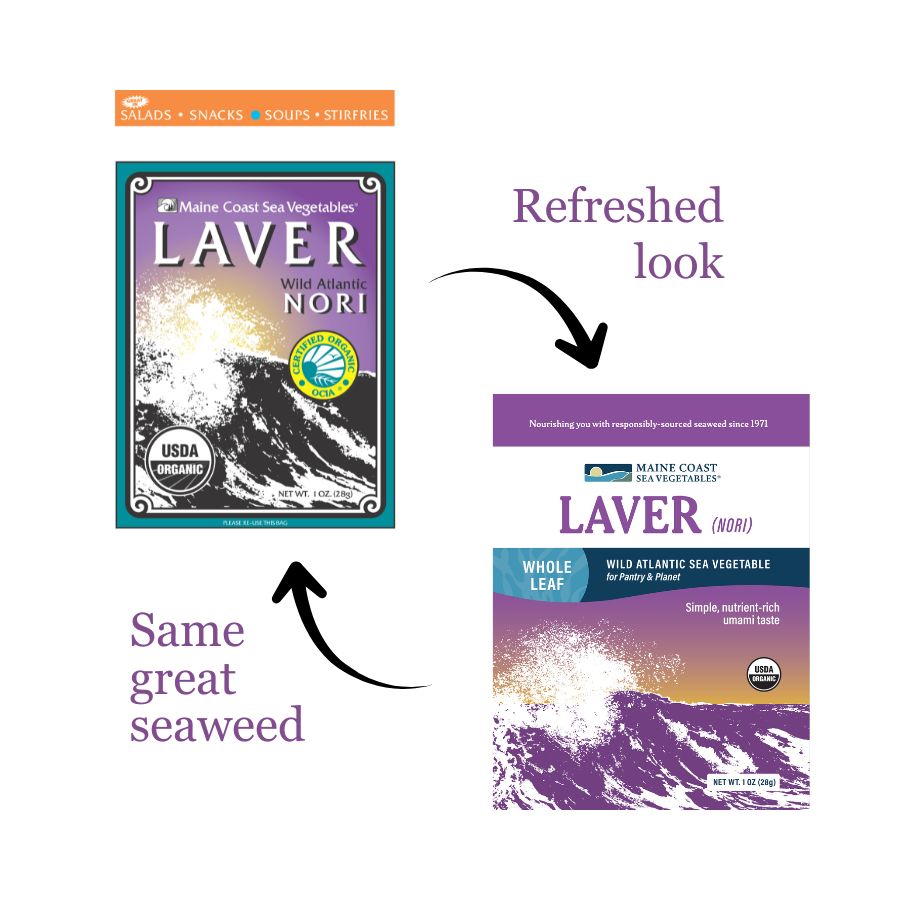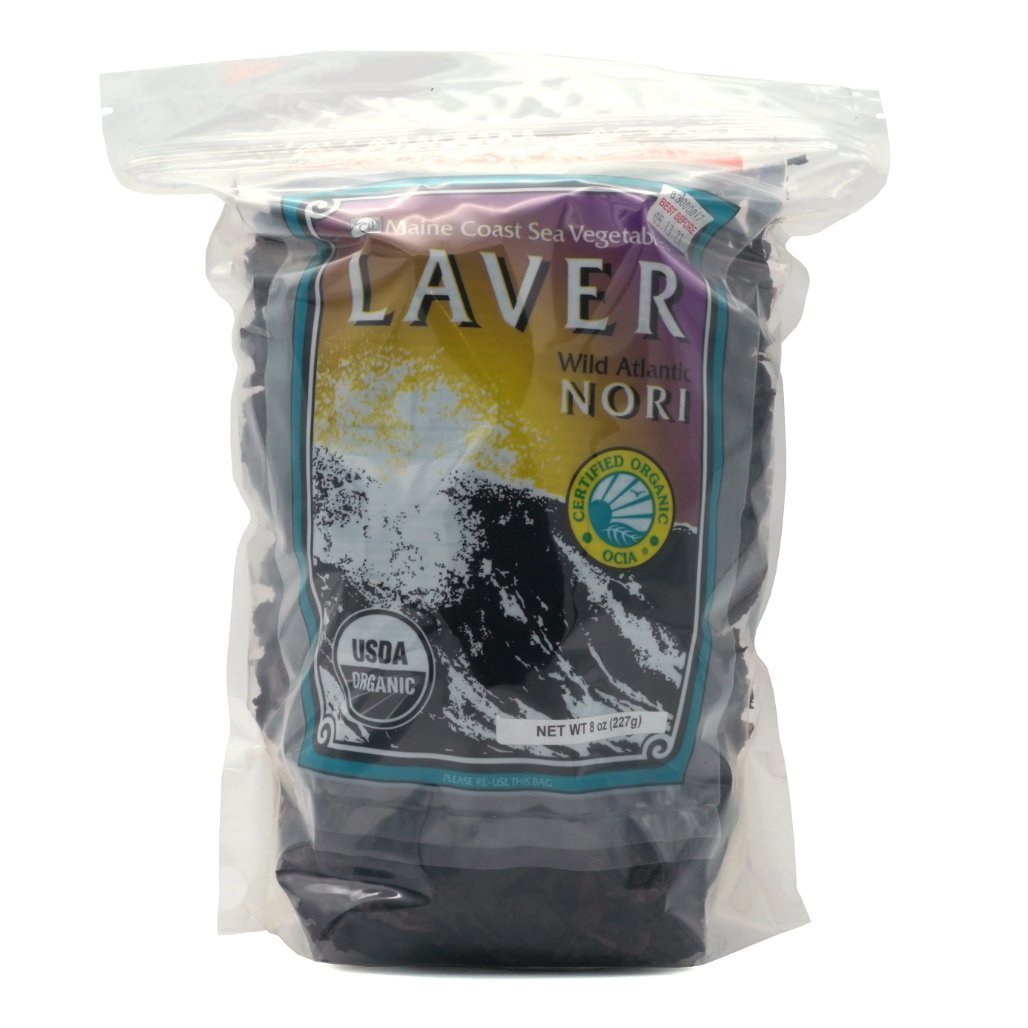Description
Premium laver (Porphyra spp.) whole leaf is also known as "Wild Atlantic Nori". Our laver is sustainably wild-harvested in the pristine waters of the North Atlantic Ocean is tested for quality and contaminants, ensuring you get the best product possible. Containing iodine, B vitamins, and essential minerals like iron, magnesium, manganese, and zinc, laver is a powerhouse of nutrition. What's more, laver contains more protein than other sea vegetables and is a great source of high-quality protein for vegetarians.
To bring out its sweet and nutty flavor, lightly roast laver in a skillet or low oven until slightly green. Then, crumble it up and sprinkle it onto soups, salads, pasta, potatoes, or any dish needing a subtle, salty savory taste. Laver flakes are an easy way to add nutrition to your meals! Available in a retail bag, bulk packaging for non-resale*, and sample portions for new sea vegetable lovers.
- Certified Organic
- Carefully dried at mild temperatures to preserve enzymes, nutrients, and the environment
- High in protein: Laver contains about 40% protein by weight - more than any other sea vegetable we sell!
- High in ocean nutrients: Laver contributes iron, manganese, zinc, vitamin A, vitamin C, B vitamins, and iodine to the diet
*Important Note: if you repackage our products they cannot be resold under our brand name and the Organic Certification claim is no longer valid.









